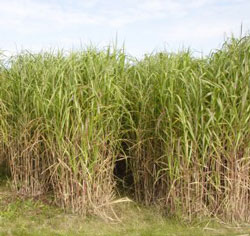A genome map for miscanthus could point the way to a source for better biofuels production.
 According to Science Daily, researchers at the University of Georgia have mapped the genomes of two originator cells of Miscanthus x giganteus, a large perennial grass with promise as a source of ethanol and bioenergy.
According to Science Daily, researchers at the University of Georgia have mapped the genomes of two originator cells of Miscanthus x giganteus, a large perennial grass with promise as a source of ethanol and bioenergy.
Changsoo Kim, a postdoctoral research associate in the UGA Plant Genome Mapping Laboratory, identified a set of approximately 600 bits of Miscanthus DNA that can serve as diagnostic tools. The next step is to determine which pieces of DNA are diagnostic of genes that can make the plant an even better biofuel crop.
Kim’s work-and the Plant Genome Mapping Laboratory-is led by Andrew Paterson, a Distinguished Research Professor who falls under the UGA departments of genetics and plant biology in the Franklin College of Arts and Sciences and crop and soil sciences in the College of Agricultural and Environmental Sciences.
“What we are doing right now is taking the same individual plants that were used in the genetic map and measuring their height, flowering time, the size of their stalks, the dimensions of their leaves and how far they have spread from where they were planted,” said Paterson, who is also a member of the Bioenergy Systems Research Institute. “And then one can use pretty straightforward statistics to look for correlations between bits of DNA and a trait.”
Miscanthus is a natural candidate for biomass farming. Its sugarcane-like stalks grow to more than 12 feet in height in soil of marginal quality; it requires very little fertilizer; it grows well in moist temperate climates across the United States, Europe and Asia; and in the eastern U.S. it can produce more biomass on less acreage than other candidate biofuel crops.

